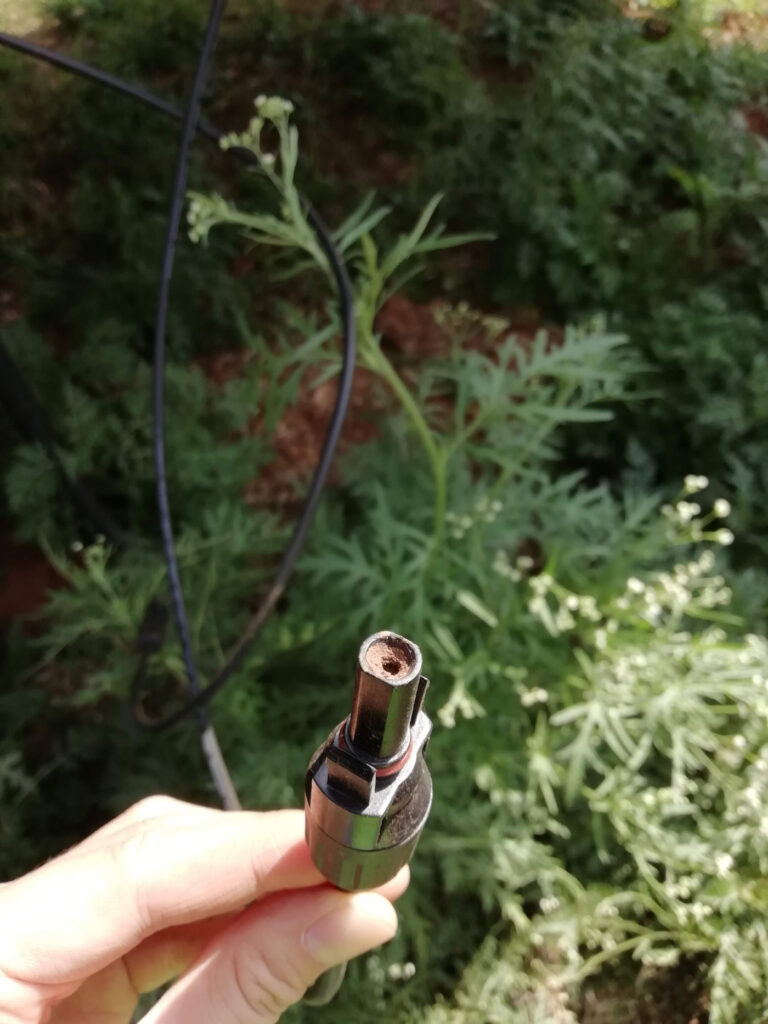Three days before our recent flight to Tanzania, we’d received word that the inverter installed at our 50kW solar array in Ormoti had stopped working. The local electrician was sent in to take a look, and found a lizard had somehow managed to crawl inside and fried its brains. He removed the lizard, thinking it may have caused a simple short circuit during his explorations (and death) but when he attempted to turn back on the inverter, it began sparking and smoking. We had discovered one of the world’s most expensive lizard killing machines for sure….
Upon arrival at the site, we removed the entire inverter and took it apart to take a look inside. Not only was there a massive burnt-out hole in the circuit board where the lizards head had been, there was also a crispy frog inside! First lesson learned: never install anything electrical in Tanzania without first carefully wildlife-proofing it, and make sure to fully disassemble any creature-infiltrated equipment to fully investigate the damage before attempting to turn it on again!
While eating a quick packed lunch, stood on our feet in the building with electronics, we noticed a large flying insect go into the VFD (motor controller)…somewhat concerning as it was obviously another insect trying to make a home inside our electronics, and we weren’t too keen on more wildlife zapping our equipment.
Upon removing the cover we not only found a two wasp nests, but also wasp larvae, a reasonable sized LIVE lizard and SEVEN eggs!!!!! Being the caring nature lovers that we are, we spent a long time carefully transferring the eggs into a cardboard box, and giving the lizard a new home under the solar panels, as far as possible away from our electronics boxes! All electronics openings were duly covered with bug-proof netting to avoid any future incidents.
Next task was to wire up the final four strings of panels that were put up over 6 months ago during the last trip before COVID hit (they hadn’t had time during that trip to finish the job). Just our luck to find that nature had won again! Every single connector which we were expecting to be able to straightforwardly connect had been colonised by a load of random insects. They were absolutely packed full of dust, eggs, caterpillars, spiders, maggots, flies and who knows what else… we spent the next 3 hours crawling around under solar panels, taking the connectors apart, poking out all the unwanted mother nature from inside, reassembling them, testing them and then finally rewiring them up. Second lesson learned: Do not leave connectors hanging loose where wildlife could get inside!
The bug removal process took us the entire afternoon, and we were forced to retire for the night when the sun began to set. The next day, we were able to connect up the panels, and replace all broken inverters. We’ll definitely be bug/lizard/creature-proofing all electrical equipment in future, and highly recommend you do the same!

















